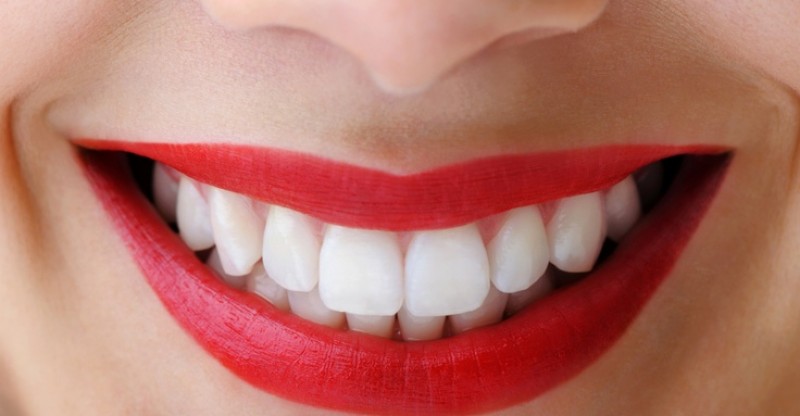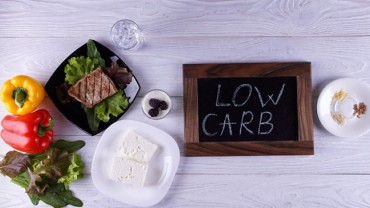11 Science-Backed Ways to Naturally Whiten Your Teeth
For many, stained or yellow teeth can be a source of embarrassment, and they can indicate various types of dental problems.
But although everyone wants perfectly white teeth, most people have some degree of yellowness or discoloration.
Teeth sometimes develop stains as a result of consuming particular foods or drinks.
Plaque buildup can also make your teeth look dull or yellow (1).
In some cases, infections and diseases can cause discolored teeth (2).
Whatever the cause of your tooth discoloration, you may wonder how to get your teeth white without an expensive professional treatment.
Americans spend billions of dollars per year on professional teeth whitening, which is a treatment that uses bleach to remove stains (3).
However, if you don’t want to spend the time or money at the dentist, you can try out some natural remedies.
Also, some people are uncomfortable with the idea of having bleach or other chemicals on their teeth, so they search for ways to whiten their teeth at home.
Fortunately, there are a wide variety of natural ways to whiten teeth.
Many home remedies use ingredients that you should already have in your kitchen, and others can easily be located in a supermarket or drugstore.
Most home remedies work by gently scrubbing away the stains on the surface of the teeth.
Some provide an immediate brightening effect, and others will gradually whiten your teeth.
Depending on the cause and severity of your tooth discoloration, you may find that some remedies work better than others.
If you’re curious about how to whiten your teeth at home, you may have to try more than one treatment before you discover which one works best for you.
Although these remedies are safe and effective, you should speak to your dentist if you have any concerns.
If you have sensitive teeth, you may have difficulty with some of these treatments.
You should also avoid teeth-whitening treatments if you currently have any unhealed cuts or sores on your mouth or lips.
To discover how to whiten teeth naturally, try these 11 home remedies:
Avoid Products that Stain
The easiest way to whiten your teeth is to prevent stains and yellowness from developing in the first place.
Most stains are caused by foods and drinks, and yellowness can also be caused by your diet.
If you want whiter teeth, try to avoid:
- Coffee
- Tea
- Red wine
- Soda
- Dark berries
- Tomato sauce
You don’t have to completely cut these foods out of your diet, but they should be occasional treats, instead of staple foods.
If you want to drink one of these beverages, use a straw to limit its direct contact with your teeth.
Also, to limit the staining effects, brush your teeth immediately after consuming any of these products.
You should also avoid candy and other foods high in sugar, which can cause harmful bacteria to grow in your mouth (4).
These bacteria release acids that cause plaque buildup and tooth decay, which can cause dark spots to form on your teeth.
Instead of these foods, you can incorporate others into your diet that actually strengthen your teeth and fight decay.
The stronger your teeth, the less likely they are to develop black spots or other stains.
Fruits with high amounts of fiber, such as apples and pears, increase saliva flow and keep teeth clean (5).
Nuts and cheese are also great foods for strengthening the teeth and preventing stains.
Consume Calcium
Yellowing or discoloration is sometimes caused by the erosion of tooth enamel, which exposes the yellow dentin underneath (6).
Keeping the enamel strong will prevent the dentin from showing through, and calcium is one of the best nutrients for strong teeth.
Foods with high amounts of calcium include:
- Milk
- Cheese
- Kale
- Broccoli
- Watercress
- Sardines
- Almonds
Proper Dental Hygiene
Inadequate brushing and flossing are one of the biggest causes of stained or discolored teeth.
If you consume any foods or drinks that stain teeth and fail to thoroughly brush and floss afterward, the food will linger for hours and hours.
The longer the food stays in contact with the teeth, the more noticeably stained the teeth will become.
Forgetting to brush and floss regularly can also cause plaque to build up, which can lead to yellowness or even black spots from tooth decay.
Brush your teeth twice a day or after every meal.
If you eat or drink something that might stain your teeth, brush your teeth immediately afterward.
And don’t underestimate the importance of flossing.
Floss will remove plaque and food particles that your toothbrush can’t reach, but these particles can still cause visible stains on your teeth.
You should also regularly visit your dentist to get thorough cleanings.
Baking Soda
Baking soda is one of the best natural ways to whiten teeth.
Most commercial tooth pastes contain baking soda, and homemade tooth pastes almost always have baking soda as a base.
Baking soda is a mild abrasive, so it gently scrubs away stains on your teeth.
It also lowers pH levels in your mouth and creates a more alkaline environment, which stops bacteria growth (7).
Multiple studies have shown that toothpaste with baking soda and similar products are more effective for teeth whitening than products that don’t contain baking soda (8,9).
Another study shows that tooth pastes with baking soda are more effective at removing plaque than other tooth pastes (10).
There are a variety of ways to use baking soda to whiten your teeth.
You can mix 1 teaspoon of baking soda with 2 or 3 teaspoons of water and use the paste to brush your teeth.
You might not notice results immediately, but your teeth will whiten over time.
However, baking soda can be abrasive on your gums, so you shouldn’t use it every single day.
A few times a week should be enough for you to see the effects in about a month.
You can also mix a couple teaspoons of baking soda with lemon juice.
Add enough lemon juice to form a thick paste, and use a clean towel to wipe all the saliva off your teeth.
Use your toothbrush to evenly apply the paste over all surfaces of your teeth.
After a minute, rinse the paste off.
Make sure you don’t leave the paste on your teeth for longer than a minute and rinse thoroughly with plenty of water.
Lemon juice is very acidic, and it can affect the enamel if left on your teeth for more than a minute.
Hydrogen Peroxide
Hydrogen peroxide kills the harmful bacteria in your mouth, and it acts as a natural bleaching agent.
Many whitening products use hydrogen peroxide because of its proven effectiveness (11).
You can use hydrogen peroxide as a mouthwash before brushing your teeth.
Swish around a solution of 1.5% hydrogen peroxide in your mouth for about 30 seconds, making sure to avoid swallowing anything.
Over-the-counter hydrogen peroxide is usually a 3% solution, but you can dilute it by mixing half a cup of peroxide with half a cup of water.
Keep in mind that strong concentrations of hydrogen peroxide can irritate your gums and cause tooth sensitivity (12), but hydrogen peroxide that has been heavily diluted with water is safe.
You can also use a mixture of hydrogen peroxide and baking soda.
One study found that brushing with a tooth paste that contained baking soda and 1% hydrogen peroxide was very successful for whitening (13).
Put a few teaspoons of baking soda in a dish, and slowly add the peroxide until it creates a thick paste.
Brush your teeth with the paste in small, gentle circles for about two minutes.
You can also directly apply the paste with your fingers, and just let it sit on your teeth for a couple of minutes.
Then thoroughly rinse the solution off with warm water.
Oil Pulling
Oil pulling is a popular remedy for removing bacteria in the mouth and improving oral hygiene, and it’s a great way to whiten your teeth at home.
The practice originated in India, where they usually use sesame oil, which greatly reduces bacteria in the saliva (14).
However, you can use any type of oil.
Coconut oil has a wide variety of benefits for teeth cleaning, including:
- Pleasant taste
- No harmful chemicals
- Reduces inflammation
- Soothes throat dryness or soreness
- Easy to find in stores
Coconut oil contains lauric acid, a fatty acid that breaks down into monolaurin.
Both lauric acid and monolaurin kill bacteria, viruses, and fungi in the mouth and the rest of the body.
Some studies even suggest that lauric acid is more effective at killing pathogens than any other fatty acid (15).
This oil prevents plaque buildup, which is a major cause of yellow or discolored teeth.
Oil pulling is completely safe and can be performed daily.
Several studies have proven the effectiveness of daily oil pulling for reducing plaque and bacteria in the mouth (16, 17).
You can apply the oil directly, or you can combine it with other ingredients.
Some people add a drop or two of peppermint oil for the minty flavor.
Put about a tablespoon of coconut oil in your mouth and wait for it to melt.
Before spitting it out, pull the oil through your teeth for about 15 or 20 minutes.
Coconut oil can solidify and cause a clog in your drain pipes, so spit it out.
You try oil pulling at any time of the day, but it’s best to do it on an empty stomach.
Many people incorporate it into their morning routine while they’re taking a shower.
Lemon, Orange, and Banana Peels
Citrus fruits, especially lemons and oranges, are great for whitening teeth.
Lemon and orange peels can function like whitening strips, which brighten up teeth after a few uses.
Citrus rinds contain d-limonene, which is included in many commercial tooth pastes and tooth whiteners.
One study published in the American Journal of Dentistry found that toothpaste with d-limonene was very effective at reducing stains on the teeth caused by smoking.
D-limonene also prevented additional smoking stains on its own (18).
To use citrus peels to whiten teeth at home, gently rub the white side of the peel over your teeth for a minute or two.
You can also sprinkle some salt over the peel, which helps the peel scrub your teeth and amplifies the whitening effects.
After applying the peel to your teeth, wait about five minutes before rinsing your mouth and brushing your teeth.
For the best results, repeat this process a few times a week.
You can also dry out some orange peels and bay leaves and create a powder.
To form a paste, add a few drops of water to the mixture, and rub the mixture over your teeth.
Whenever you use citrus on your teeth, you should be careful.
Orange and lemon juice can break down tooth enamel if they have prolonged contact with the surface of the tooth.
After using an orange or lemon peel on your teeth, immediately rinse your mouth out with water for a minute or two.
Banana peels are another effective whitening treatment.
This fruit contains potassium, magnesium, and manganese, which can all remove stains from your teeth.
Remove the peel from a yellow banana and rub the inside of it over your teeth for two or three minutes.
Then rinse your mouth with water and brush your teeth.
You may not notice results immediately, but you should after repeating this process once or twice a week for a few weeks.
Apple Cider Vinegar
Apple cider vinegar is a great disinfectant and natural cleaner.
Its main ingredient is acetic acid, which kills bacteria and can whiten your teeth (19, 20).
One study found that apple cider vinegar has a bleaching effect, but it can also soften the teeth (21).
The acetic acid can break down tooth enamel if it makes prolonged contact with the tooth’s surface (22).
If you want to use apple cider vinegar for teeth whitening, it’s important to do it safely, which will prevent it from damaging your teeth.
Mix a teaspoon of apple cider vinegar with a cup of water.
Swish the solution around in your mouth for a minute or two, then rinse with plain water and brush your teeth.
To maintain the results, repeat this process once or twice a week.
Turmeric
Turmeric is famous for staining clothing, skin, and other surfaces, but it can have the opposite effect on your teeth.
It has antimicrobial and antiseptic properties, and it’s often used as a mouthwash or as a treatment for gum disease (23).
It’s completely safe for oral use, and it can clean your teeth while it whitens them.
You can buy turmeric as a powder in most grocery stores.
To form a paste, mix 1 teaspoon of turmeric powder with 1 teaspoon of water.
Brush your teeth with the mixture for two or three minutes.
Then repeatedly rinse with water and spit until the liquid comes out clear.
While brushing, your teeth will look very yellow.
However, as soon as you rinse with water, the yellowness will disappear, and your teeth will be noticeably brighter.
You can also mix the powder with other whitening ingredients.
One popular recipe is two teaspoons of turmeric, one teaspoon of baking soda, and one teaspoon of coconut oil.
This mixture should form a paste, which you can use to brush your teeth.
If you have a turmeric root, you can chew on a piece of it to get the whitening effects.
Frequently move it around in your mouth to make sure it equally makes contact with all of your teeth.
After a few minutes, spit it out and thoroughly rinse your mouth.
Activated Charcoal
Activated charcoal is very absorbent, so it removes stains and toxins wherever it makes contact.
It’s also often used to relieve pain from toothaches, canker sores, and dental infections (24).
The charcoal only works on stains it can bind to, so it’s most effective with stains from food or drinks.
It won’t work as effectively on teeth that have become yellow or discolored from an internal problem.
You can buy activated charcoal online or at natural health stores.
Look for a powder form to use on your teeth.
If you can only find it in tablet form, grind up one or two tablets into a powder.
Also, make sure the charcoal you buy is either edible or a supplement.
Any other grade or form is unsafe to use in your mouth.
Dip a wet toothbrush into the charcoal powder and gently brush your teeth for two minutes.
When moving the toothbrush from the container of charcoal to your mouth, be careful not to spill any onto your counter or floor, as it can stain.
While the charcoal is in your mouth, your teeth will be stained black.
However, it easily rinses out, so it leaves your teeth looking whiter.
When you’re done, thoroughly rinse your mouth with water to get all the charcoal out.
You can repeat this process a few times throughout the week.
After the first week, you can maintain the results by brushing with charcoal about once a week.
Charcoal is abrasive, so avoid brushing too aggressively or too long.
If you’re worried about it damaging the enamel, you can apply the charcoal with your finger or a cotton swab.
Then let it set on your teeth for two minutes, instead of brushing.
You can also mix the charcoal with water, and swish it around your mouth for two minutes.
Strawberries and Pineapple
A mixture of strawberries and baking soda may be one of the best home remedies for teeth whitening.
Strawberries have high levels of Vitamin C, which help break down the plaque that causes yellowing.
They also contain malic acid, which can remove discoloration, and baking soda clears away stains.
Therefore, the combination can remove external stains from foods or drinks and brighten up yellowing or discolored teeth.
Mash up one or two fresh strawberries and combine them with some baking soda.
Dip a clean toothbrush in the mixture and gently brush your teeth with it, or apply it to your teeth with a finger.
Leave the mixture on your teeth for a minute or two before rinsing with water.
Some people also recommend adding a pinch of salt to the baking soda and strawberry mixture.
Salt is abrasive, so it helps to scrub away plaque that could cause stains.
If you add salt to your treatment, be careful not to brush too hard.
You should see the results of the treatment right away.
Results might not be permanent, but this remedy is a good quick fix to brighten teeth.
However, don’t use this treatment every day.
Rubbing strawberries on your teeth more than once or twice a week may damage the enamel (25).
Although it’s a less popular option than strawberries, pineapple may also be an effective whitening treatment.
Pineapple contains bromelain, an enzyme also found in some tooth pastes.
One study found that toothpaste with bromelain was more effective at removing stains than regular toothpaste (26).
You can use pineapples to make a mixture that’s similar to the strawberry concoction.
Mash up the pineapple, add some baking soda, and brush with the mixture.
However, if pineapple makes prolonged contact with your teeth, the acid can damage your enamel.
Don’t use this treatment more than once a week, and only leave the pineapple on your teeth for one minute.
FDA Compliance
The information on this website has not been evaluated by the Food & Drug Administration or any other medical body. We do not aim to diagnose, treat, cure or prevent any illness or disease. Information is shared for educational purposes only. You must consult your doctor before acting on any content on this website, especially if you are pregnant, nursing, taking medication, or have a medical condition.
HOW WOULD YOU RATE THIS ARTICLE?






